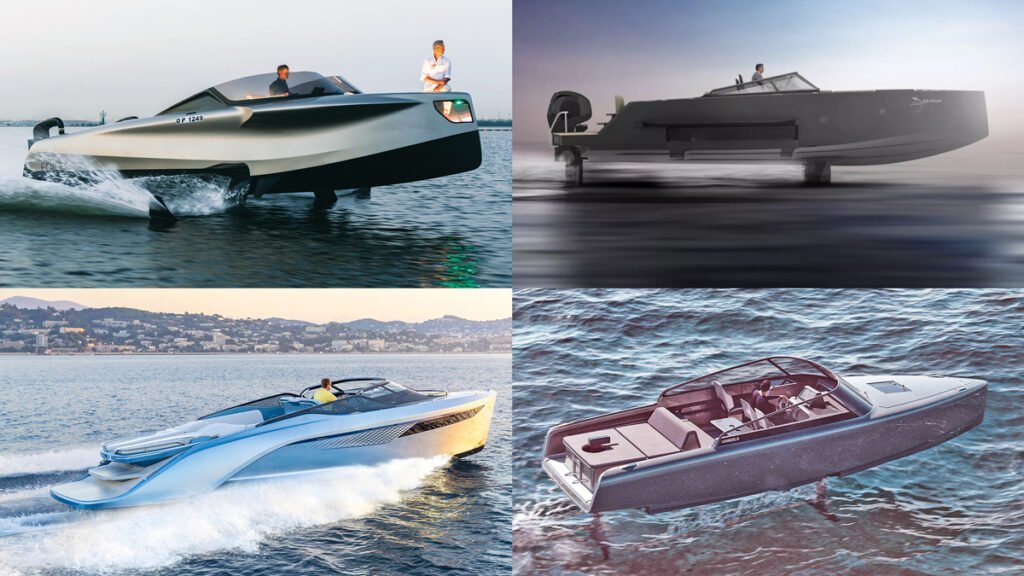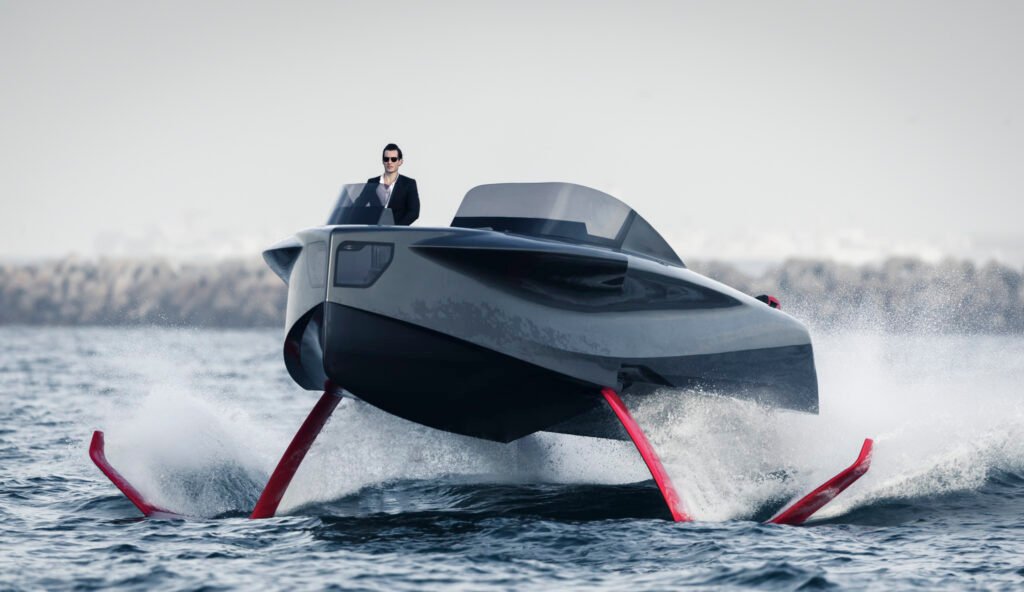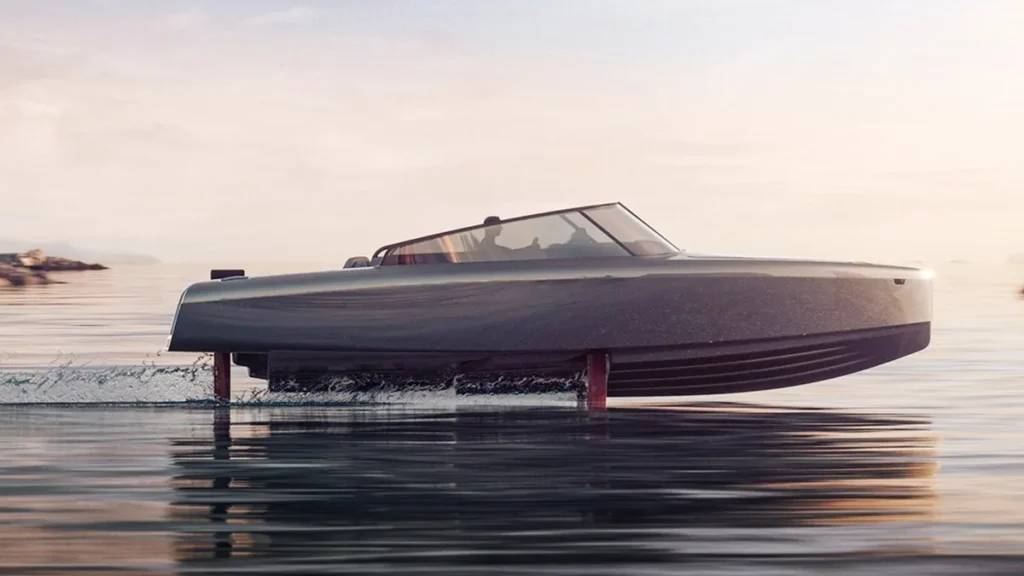Hydrofoiling boats are the latest trend in the world of water sports and recreational boating. These innovative boats use hydrofoils to lift the hull out of the water, significantly reducing drag and allowing for a smoother, faster, and more exhilarating ride. Whether you’re an avid boater, a watersport enthusiast, or simply curious about this new technology, hydrofoiling boats offer a unique and exciting experience on the water.
In this article, we will cover everything you need to know about hydrofoiling boats—from how they work to the different types available, the benefits of using them, and tips for getting started. By the end of this guide, you’ll be ready to take to the water and experience the thrill of hydrofoiling for yourself.
What is a Hydrofoiling Boat?

A hydrofoiling boat is a type of watercraft that uses hydrofoils—wing-like structures mounted beneath the boat’s hull—to lift the boat above the water as it moves. When the boat reaches a certain speed, the hydrofoils generate lift, causing the hull to rise out of the water. This reduces water resistance, also known as drag, and allows the boat to glide more efficiently, resulting in higher speeds and a smoother ride.
Hydrofoiling boats are often powered by outboard motors, and they can be used for recreational purposes, watersports, and racing. The hydrofoil technology has been around for some time, but recent advancements have made it more accessible for recreational use.
How Does a Hydrofoiling Boat Work?
The basic principle behind a hydrofoiling boat is the same as any other type of hydrofoil technology—using the flow of water to generate lift. However, there are some unique features that make hydrofoiling boats distinct from traditional boats.
1. Hydrofoils and Lift
A hydrofoil is an underwater wing that generates lift as the boat moves forward. When the boat reaches a certain speed, the hydrofoils create enough lift to elevate the hull above the water’s surface. This reduces drag, allowing the boat to glide more smoothly through the water and achieve higher speeds.
Hydrofoils are typically positioned beneath the boat at the bow (front) and stern (rear). The design of the hydrofoils can vary depending on the type of boat, with some models having a single hydrofoil at the rear, while others use multiple hydrofoils to create more lift and stability.
2. Hydrofoiling Boat Components
Hydrofoiling boats consist of several key components:
- Hydrofoils: These are the wing-like structures that are attached to the boat’s hull and submerged underwater. They generate lift as the boat moves, raising the hull above the water’s surface.
- Hull: The hull of the boat is designed to be streamlined, reducing resistance as it rises above the water. The hull can be made from lightweight materials such as carbon fiber, which further improves the boat’s performance.
- Propulsion System: Most hydrofoiling boats use an outboard motor or electric motor for propulsion. As the boat accelerates, the hydrofoils begin to generate lift, lifting the boat’s hull out of the water.
- Control System: Modern hydrofoiling boats come with advanced control systems that allow the rider to manage speed, lift, and balance while riding. These systems ensure smooth and stable rides even at high speeds.
3. The Lift-Off Process
When you start the boat and accelerate, the hydrofoils begin to generate lift. Initially, the hull will still be in contact with the water, but as you increase speed, the lift provided by the hydrofoils will cause the boat to rise. Once the boat reaches the optimal speed, the hull lifts completely out of the water, and the boat is “foiling.” At this point, the boat experiences less drag, resulting in a faster and smoother ride.
Types of Hydrofoiling Boats

Hydrofoiling boats come in different shapes and sizes, depending on their intended use. Here are some of the most popular types:
1. Recreational Hydrofoiling Boats
Recreational hydrofoiling boats are designed for leisure and casual watersports. These boats are typically used for activities such as wakeboarding, waterskiing, and cruising. They are often equipped with comfortable seating, a stable design, and a reliable hydrofoil system that ensures smooth rides.
Recreational hydrofoiling boats can be found in a variety of models, from small, lightweight boats to larger vessels equipped for multiple passengers.
2. Racing Hydrofoiling Boats
Racing hydrofoiling boats are high-performance machines built for speed and agility. These boats are designed to perform at their best in competitive environments, with advanced hydrofoil systems and lightweight materials that help them achieve maximum speed. Racing hydrofoiling boats are typically used in competitive events, such as hydrofoil boat races or regattas.
Racing boats often have more specialized and finely-tuned hydrofoils and propulsion systems, giving them an edge in terms of performance.
3. Electric Hydrofoiling Boats
Electric hydrofoiling boats are an eco-friendly alternative to traditional hydrofoiling boats. These boats use electric motors instead of gasoline-powered outboards, making them quieter and more environmentally friendly. Electric hydrofoils have gained popularity in recent years due to their lower environmental impact, ease of use, and quiet operation.
Electric hydrofoiling boats are often used for recreational purposes, providing a more sustainable option for those looking to enjoy the experience of hydrofoiling.
4. Hydrofoiling Paddleboards
Hydrofoiling paddleboards are smaller and more lightweight than traditional hydrofoiling boats. They use a similar hydrofoil system to lift the board above the water, allowing riders to glide over the surface effortlessly. Hydrofoiling paddleboards are ideal for those who want to experience the thrill of hydrofoiling while maintaining a more relaxed, individual experience.
Benefits of Hydrofoiling Boats
Hydrofoiling boats offer a range of benefits that make them an appealing option for boating enthusiasts:
1. Reduced Water Resistance and Higher Speeds
One of the most significant advantages of hydrofoiling boats is their ability to reduce drag. With the hull lifted out of the water, these boats experience significantly less resistance, allowing them to achieve higher speeds compared to traditional boats. This makes for an exciting and smooth ride, especially at high speeds.
2. Smoother Ride
Because the hull is lifted out of the water, hydrofoiling boats offer a much smoother ride, even in rough conditions. The reduced contact with the water means fewer bumps, waves, and other disturbances, making the experience more enjoyable, especially for those who prefer a calm and stable ride.
3. Fuel Efficiency
Hydrofoiling boats are more fuel-efficient than traditional boats because they experience less drag. As a result, these boats require less power to maintain speed, which can lead to reduced fuel consumption over time. Electric hydrofoiling boats, in particular, provide a more energy-efficient option, with fewer emissions compared to gas-powered vessels.
4. Eco-Friendly Options
As mentioned earlier, electric hydrofoiling boats are a more sustainable option compared to traditional gas-powered boats. These boats are not only quieter but also produce zero emissions, making them an environmentally friendly choice for water enthusiasts. This reduces noise pollution and minimizes the impact on aquatic ecosystems.
How to Get Started with Hydrofoiling Boats

If you’re new to hydrofoiling, there are several steps you can take to get started:
1. Learn the Basics of Hydrofoiling
Before getting behind the wheel of a hydrofoiling boat, it’s essential to understand how it works and how to control it. You should familiarize yourself with the mechanics of hydrofoiling, the controls of the boat, and basic safety practices. Some boat dealers offer training programs or lessons to help new riders learn the basics.
2. Choose the Right Hydrofoiling Boat
There are various types of hydrofoiling boats available, so it’s important to choose one that suits your needs. Whether you’re looking for a recreational boat, a racing vessel, or an electric-powered boat, make sure to consider factors like speed, size, and intended use.
3. Practice in Calm Waters
When starting out, it’s important to practice in calm and safe waters. Begin by learning to accelerate slowly and gradually increase speed until you feel comfortable with the boat’s handling. Hydrofoiling can be challenging at first, but with practice, you’ll gain confidence and master the technique.
4. Safety First
Always wear a life jacket and other protective gear while riding a hydrofoiling boat. Hydrofoiling requires balance and coordination, and it’s essential to prioritize safety to prevent accidents. Additionally, make sure your boat is well-maintained and that all safety equipment is in good condition.
Also Read : How To Improve Your Paddleboarding Skills Like A Pro
Conclusion
Hydrofoiling boats are an exciting and innovative way to enjoy the water, offering thrilling speeds, smooth rides, and improved fuel efficiency. Whether you’re interested in recreational boating, competitive racing, or exploring eco-friendly options, hydrofoiling boats provide a unique experience for water sports enthusiasts.
As the technology behind hydrofoils continues to evolve, these boats will likely become more accessible and popular, opening up new opportunities for both seasoned boaters and beginners alike. By understanding how they work, their benefits, and how to get started, you can enjoy the exciting world of hydrofoiling and experience the future of boating firsthand.
FAQs
What is a hydrofoiling boat?
A hydrofoiling boat is a type of watercraft that uses hydrofoils—wing-like structures beneath the boat—to lift the hull out of the water, reducing drag and allowing for a smoother, faster ride.
How fast can a hydrofoiling boat go?
Hydrofoiling boats can reach speeds of 30 to 50 mph or more, depending on the size of the boat, the hydrofoil design, and the engine power. The reduced drag allows for higher speeds compared to traditional boats.
Are hydrofoiling boats easy to ride?
Hydrofoiling boats require some practice to master, as you need to learn how to control the speed and balance the boat as it lifts out of the water. Beginners should start in calm waters and gradually increase speed as they gain confidence.
Are there any eco-friendly hydrofoiling options?
Yes, electric hydrofoiling boats are available, offering a more eco-friendly and energy-efficient alternative to traditional gas-powered boats. These boats produce zero emissions and are quieter, making them a sustainable option for water enthusiasts.
How much do hydrofoiling boats cost?
The cost of hydrofoiling boats can vary widely based on the type, size, and features. Prices can range from a few thousand dollars for smaller recreational models to over $100,000 for high-performance or specialized boats.
